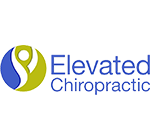Photo by Joyce McCown on Unsplash
Disc pain can be a sharp pain that spasms every surrounding muscle in your low back or neck – so much so that you can barely move. It can be a sharp shooting pain like a jolt of electricity that travels into an arm or leg. It can also be a twinge of pain that happens with every movement you make but that causes a dull achey pain throughout your low back or neck. These are all types of disc pain. All of them different, but all of them can interfere with your daily activities and wreak havoc on your life. So how do you know when the pain you’re having is disc pain and sciatica or just a severe muscle spasm? And what can you do about disc pain? Does it ever go away? Can it be managed? Here are 5 things about disc pain that every person should know.
- How to know when you’re experiencing disc pain:
Disc pain can sometimes be mistaken for other forms of pain like muscle spasms or nerve compression like sciatica and thoracic outlet syndrome. But how can you tell the difference and know when you’re experiencing pain from a disc bulge or a “slipped disc”? A disc protrusion or “slipped disc” can give specific symptoms that are hallmark to this type of injury. Common symptoms of a disc bulge can include sharp pain with movement, a burning sensation around the area of injury, numbness or tingling around the disc that can even travel to other parts of the body, and/ or pain in the back or neck when coughing, sneezing, or laughing. Disc protrusions can cause more pain while standing or sitting for short to long periods of time, it can also increase pain with walking short distances or with bending over/looking down or up. Disc pain can also travel into your arm if you have a cervical disc protrusion or down your leg if you have a lumbar disc protrusion. It can be a numbness, tingling, burning, or electric sensation into the arm or leg. A cervical disc protrusion or lumbar disc protrusion can also start to cause muscle weakness.
- Disc pain vs. sciatica – how to know the difference:
So you may be reading the above and think – those symptoms sound very similar to sciatica – how is a herniated disc different than sciatica pain? First, we have to define what sciatic pain is in order to distinguish the difference between the two. Sciatic pain is when the sciatic nerve is compressed by some other part of the body, that causes sharp pain with movement and numbness/tingling or shock like pain into the back of the leg that extends past the knee or into the foot. Sciatica is most commonly caused by the piriformis muscle (located within the gluteal region) that presses on the sciatic nerve as it travels into the leg. But sciatica can also be caused by other things like narrowing of the canal where the sciatic nerve comes out of the spine or from a bone spur or a disc herniation.
So how are these two things different? Both can radiate pain into the leg, but a lumbar disc herniation will cause pain to travel from the low back into the leg – it can be in the front or the back of the leg, it can stop at the gluteal area or at the knee or go into the foot. This is different from sciatica that will start more commonly in the gluteal area and travel past the knee. Sciatica won’t stop at the gluteal area like a disc herniation will, it will never be in the front of the thigh/calf, and it definitely won’t cause pain in your low back.
- What can be done for disc pain?
Disc pain can be managed in a number of ways. The main two ways of managing disc pain is through conservative care and more invasive care. Conservative care can include everything from spinal manipulation via chiropractors or going to get acupuncture, to corticosteroid or PRP injections into the disc. Most healthcare practitioners agree that patients with disc pain should seek conservative types of therapy first and try it out for 6-8 weeks. This can include massage, spinal manipulation, acupuncture, physical therapy, traction, cupping, flexion-distraction therapy, regular exercising, spinal/disc injections, herbs, supplements, pain relievers like NSAIDS or pain killers, and anything else that isn’t surgery. This is because invasive care is considered as surgical procedures such as spinal fusions, a discectomy, spinal laminectomy/spinal decompression, artificial disc replacement, insertion of hardware like rods/screws, and can be performed arthroscopically and leave minimal scarring or can involve open spine surgery which will leave bigger scars. Now most patients will lump disc injections in with surgery as an invasive procedure because it is invading their space, however it is not considered an invasive procedure because unlike surgery, the effects are fading or reversible. Surgical procedure such as spinal fusion is only reversible through another surgical procedure, and even then, the effects of that type of procedure can never be truly reversed compared to the conservative forms of treatment like physical therapy or massage.
That’s why many healthcare practitioners will tell patients to try conservative care for 6-8 weeks, and only consider invasive care if the conservative therapies fail to provide any amount of relief/improvement – or if your condition continues to worsen via neurological symptoms or caudal equina syndrome. However, many patients do end up improving with conservative care – some with quicker results or more relief than others but many improve nonetheless.
- Does disc pain go away?
This may seem like a straight forward answer, but the answer is both yes and no and it depends. Discogenic pain can go away to the point where a patient no longer feels pain or numbness/tingling sensations. However, just because the pain goes away does not mean that the cause of the disc pain goes away. The herniated disc will always be there; unless you surgically remove it or it completely breaks off and gets reabsorbed by the body – i.e. a disc extrusion. Therefore, if the herniated disc stays herniated, then that means the disc pain can always come back even if it has previously gone away. Disc pain is very much like a roller coaster – you will have times where the disc is aggravated and inflamed, and you will have times where the herniated disc causes zero pain and you can live life normally. It just depends on the patient, their exercise habits, other chronic conditions, how their body interprets/feels pain, the amount of inflammation in the body, and if the patient is doing activities that aggravate that disc bulge (like lifting heavy objects often or doing so with poor form/posture). Pain can be ever changing, and this includes disc pain. That’s why it is useful to ask questions and see what your doctor says about your specific condition or injury.
- How to manage disc pain:
Disc pain can be managed in a number of ways and with the help of many healthcare professionals. The patients with the most success at managing their disc pain have a team of healthcare professionals who help care for the patient and manage their pain. This can include a physical therapist, chiropractor, acupuncturist, personal trainer, neurologist, general practitioner, massage therapist, and more! Many patients find relief with a variety of conservative treatments – it just takes figuring out which combination provides the most relief of pain and improvement of symptoms. This all depends on the patient, their preference, and how their body responds to all the various forms of treatment. Some patients find overwhelming relief from regular acupuncture treatment, and others find it provides minimal relief or they just don’t like needles! It all depends on the patient and how their body responds to care. It just takes trying out a variety of forms of therapy and sticking with the ones that decrease your symptoms the most. The great thing about having a team of experts treat your disc pain, is that you receive the best care that is specific to you and your needs. You get to decide your health. You get to decide which practitioners help guide you on your health journey. So talk with your doctor about developing a plan that best suits you and your health needs/goals. Make appointments with various healthcare professionals and see what their treatment types have to offer you. Try forms of therapy that you’ve never tried before. You never know what kind of relief and healing that can come from them.




